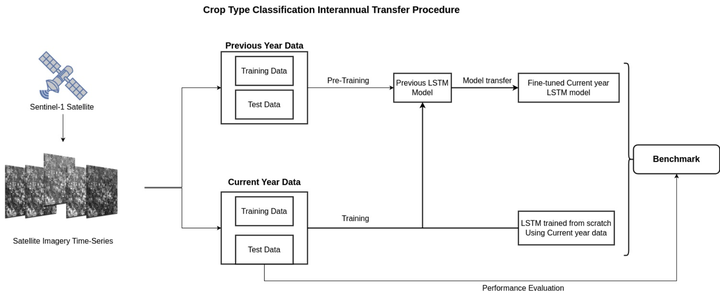Evaluation of Data Sufficiency for Interannual Knowledge Transfer of Crop Type Classification Models

Abstract
We present a study on the effectiveness of using varying data sizes to transfer crop type classification models from one year to the next, emphasizing the balance between data sufficiency and model accuracy. The significance of crop detection through satellite imaging lies in its potential to enhance agricultural productivity and resource management. Machine learning, particularly techniques like long short-term memory (LSTM) models, has become instrumental in interpreting these satellite data due to its predictive accuracy and adaptability. However, the direct application of models trained in one year to subsequent years poses challenges due to variations in environmental conditions and agricultural practices. Fine-tuning pre-existing models is a prevalent strategy to overcome these temporal discrepancies, though it necessitates a careful evaluation of the quantity and relevance of new data. This study explores the cost–benefit of fine-tuning existing models versus developing new ones based on the quantity of new data, utilizing LSTM models for their transferability and practicality in agricultural applications. Experiments conducted using satellite data from farms in southern Alberta reveal that smaller datasets, with fewer than 25 fields per class, can effectively fine-tune models for accurate interannual classification, while larger datasets are more conducive to training new models. This poses a key challenge in optimizing data usage for crop classification, straddling the line between data sufficiency and computational efficiency. The findings offer valuable insights for optimizing data use in crop classification, benefiting both academic research and practical agricultural applications.